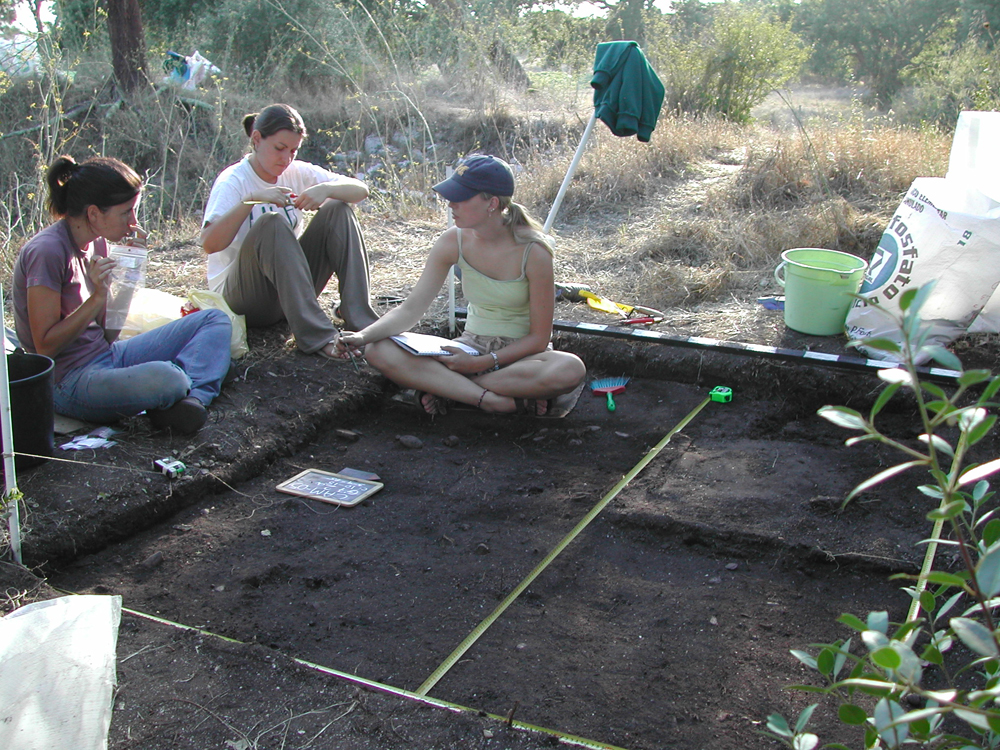RESEARCH
As a principal investigator or a co-director, I am currently involved in several long-term programs of research that focus on the effects that increasing sedentism and increasing segmentation have on individual life histories and burial patterns, as a proxy for changing ideological landscapes of groups in contact or transition. Osteobiographies of individual skeletons and their postmortem taphonomic histories are combined to elucidate larger anthropological questions pertaining to the individual and the corporate essence of a dead person, complexities of their ancestral roles, and the effects gender, age, and status played in the ideological landscape of those groups. With these goals in mind, I am using innovative methods in dispositional taphonomy, paleodemography, paleopathology and population studies, intertwined with spatial archaeology, landscape analysis and a firm understanding of circum-Mediterranean prehistory.
Since 1997, I have been actively involved in re-analysis of the Lepenski Vir and other Iron Gates Gorge Mesolithic sites. My thesis examined population changes at the time of contact with agricultural communities in the Balkans, and concluded that temporal trend and ideological integration could have played a much more important role in this change than adoption of agriculture. With Jackes and Meiklejohn, I conducted a study of fertility on these sites, which resulted in recognition that Lepenski Vir shows a strong cultural bias in terms of burials, and can not be regarded as a normal population. In an edited book and a recent article, I examined the role of violent interactions in the regional context as well as the notion that violence was endemic in the Mesolithic. I am currently interested in the pattern of residence, migration and ideological integration, and the role they played in shaping the site of Lepenski Vir, its burial practices and exquisite artistic achievements.

The Iron Gates Gorge: In the foreground, on the left, the terrace of the 'Hajducka Vodenica site. Lepenski Vir, Padina and Vlasac are further upstream in the narrow gorges. (Photo M.R. May 2000)
From 2000-2003, I co-directed the excavations of the Muge valley shell middens (with Jose Manuel Rolão and Eugenia Cunha) – sites with prominent role in European Mesolithic research since mid 19th century. We are expending our team and mandate and will start a new phase of field research next summer. In conjunction with my ongoing study of the skeletal material excavated in previous field seasons in the Museum of Geology (Lisbon, Portugal) I am examining micro-spatial relationships of burials, hearths, communal feeding areas and site abandonment patterns. In cooperation with the owner of the land, we are developing a CRM aspect of the site excavations that will promote museological and educational value for the local and non-local communities.

Cabeco da Amoreira: excavations, 2003. (Photo M.R. September 2003)
With David Smith, Esteban Parra, and Carney Matheson and Cuban colleagues Juan Jardiens and Tatiana Zaldivar, I am involved in the launch of a comprehensive program of study of Peri-colonial Cuban archaeology, geoarchaeology, bioarchaeology and molecular anthropology.
With Profs. Djuric and Rakocevic (Institute of Anthropology, Medical Faculty, University of Belgrade, Serbia) I am conducting a comparative study of the internal architecture of the trabecular bone in proximal femur in archaeological and modern populations. The goal of this study is to examine the underlying factors in osteoporosis and hip fracture (observed in our sample of Mesolithic hunter gatherers) through concentration on trabecular structure in addition to commonly examined bone density as a predictor of osteoporotic conditions. This multidisciplinary research, with possible applications in bioarchaeology, paleoanthropology and medical science, will be carried on archaeological, forensic and medical samples using crossesctioning, 3D imaging with CAT scan, and digital radiography. The study will have implications for my continuing work on paleodemography and we plan to extend it to vertebral bodies in future.


